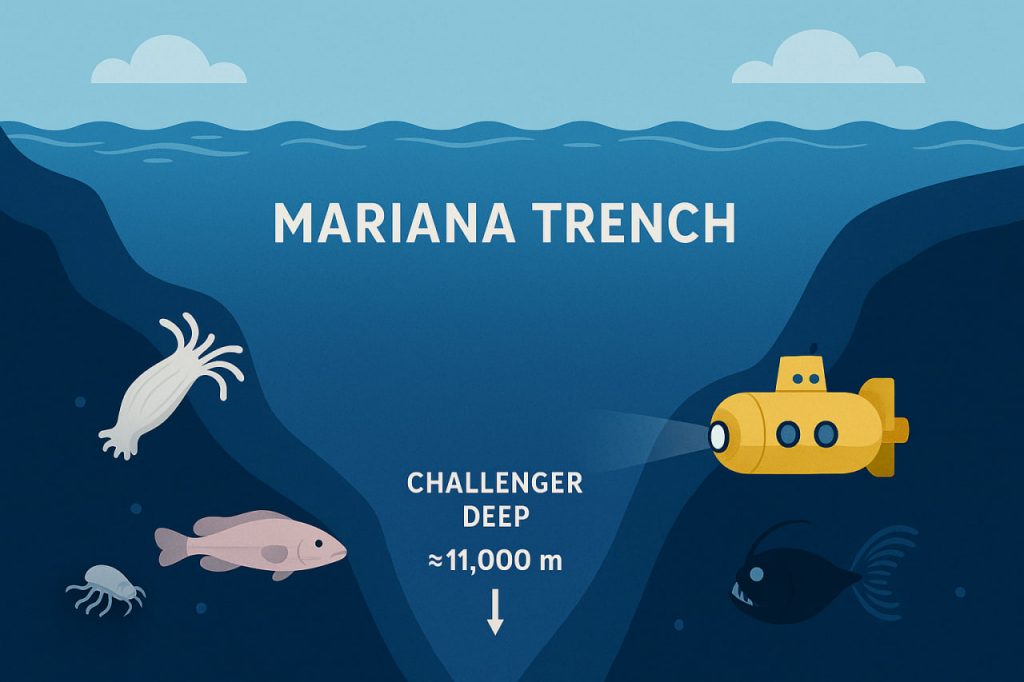The Mariana Trench is the deepest known part of Earth’s oceans, located in the western Pacific Ocean, east of the Mariana Islands. It is a crescent-shaped trench about 2,550 kilometers long and up to 69 kilometers wide. Its maximum depth is found at a point known as the Challenger Deep, which reaches nearly 11,000 meters below sea level — deeper than Mount Everest is tall.
Formation of the Trench
The trench was formed by a process called subduction, where one tectonic plate slides beneath another. In this case, the Pacific Plate is being forced under the smaller Mariana Plate, creating a deep trench in the ocean floor. This process continues today, making the Mariana Trench a highly active geological zone.
Extreme Conditions
Life in the Mariana Trench exists under some of the harshest conditions on Earth:
- Enormous pressure – more than 1,000 times the atmospheric pressure at sea level.
- Complete darkness – sunlight does not penetrate to such depths.
- Near-freezing temperatures – about 1–4°C.
Despite these extremes, the trench hosts unique ecosystems adapted to survive in darkness and crushing pressure.
Life in the Trench
Scientists have discovered:
- Microorganisms that thrive on chemicals rather than sunlight (chemosynthesis).
- Strange fish such as the snailfish, which survives where few other vertebrates can.
- Crustaceans and sea cucumbers that withstand toxic environments.
These organisms help researchers understand how life can adapt to extreme environments, even hinting at the possibility of life on other planets.
Exploration History
- 1875 – First measured by the HMS Challenger expedition.
- 1960 – Jacques Piccard and Don Walsh reached the Challenger Deep in the bathyscaphe Trieste.
- 2012 – Filmmaker James Cameron made a solo dive in the Deepsea Challenger.
- Recent years – Robotic submarines and modern expeditions continue to explore the trench, mapping its geography and studying its ecosystems.
Scientific Importance
- Provides insight into plate tectonics and Earth’s geology.
- Serves as a natural laboratory for studying extremophiles (organisms living in extreme conditions).
- Helps scientists understand the carbon cycle, as trenches play a role in trapping organic material from the ocean surface.
Conclusion
The Mariana Trench remains one of the most mysterious places on Earth. Its extreme depths, unique life forms, and role in geology make it a crucial subject of scientific research. Exploring it expands our knowledge of life’s adaptability, Earth’s processes, and even the potential for survival in extraterrestrial environments.
Glossary
- Subduction – when one tectonic plate moves under another.
- Challenger Deep – the deepest known point in Earth’s oceans.
- Chemosynthesis – the process by which organisms produce energy using chemical reactions instead of sunlight.
- Extremophiles – organisms that survive in extreme environmental conditions.
- Bathyscaphe – a deep-diving vessel used for underwater exploration.


